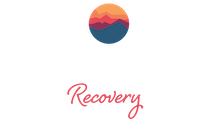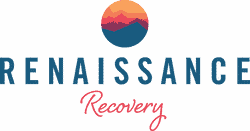Recovery from addiction is an ongoing journey that may not always be linear. Many people find that engaging with support groups like AA (Alcoholics Anonymous) or SMART Recovery provides encouragement, guidance, and accountability as they move from rehab into sober living.
AA is a 12-step addiction addiction treatment program that’s underpinned by spiritual principles. SMART Recovery is a secular alternative. Read on to learn more about these addiction peer support groups, and find out if they might be beneficial for your ongoing recovery.
Need help getting addiction treatment?

What Is A Twelve Step Program?
A twelve-step program serves as a supportive framework for individuals looking to overcome addictions to alcohol, prescription medications, or illicit drugs. The methodology was pioneered in the 1930s by Alcoholics Anonymous. The steps were inspired by founder Bill W.’s spiritual revelation while receiving treatment for alcohol addiction.
The core of the twelve-step approach involves a person acknowledging their inability to control their addiction embracing a higher power as personally understood, making a thorough self-assessment, making amends for past wrongs, and offering support to others facing similar challenges.
Over time, this foundational structure has been adapted by various groups and organizations to help people with a broad spectrum of addictions and behavioral issues.
What Are The Twelve Steps?
These are the twelve steps of AA:
- Admit powerlessness: Recognize that alcohol controls your life and that you cannot manage it on your own.
- Find hope: Believe that a higher power can restore your sanity and help you recover.
- Make a decision: Decide to turn over your life and your will to the care of the higher power as you understand it.
- Take an inventory: Honestly examine your faults and the wrongs you’ve done in a personal moral inventory.
- Share your flaws: Admit to yourself, to the higher power, and to another person the exact nature of your wrongs.
- Get ready for change: Be fully ready to have this higher power remove any character defects.
- Ask for help: Humbly ask the higher power to remove your shortcomings.
- List those harmed: Make a list of everyone you have harmed and try to make amends to them all.
- Make amends: Whenever possible, directly make amends to such people, unless doing so would injure them or others.
- Continue personal inventory: Continue to take personal inventory and promptly admit when you’re wrong.
- Practice prayer and meditation: Improve your conscious contact with the higher power through prayer and meditation.
- Carry the message: Try to carry the message to others and practice these principles in all aspects of life.
These steps are designed to be worked through with the support of a sponsor and the AA community, streamlining a person’s journey toward sobriety and personal growth.
What Is SMART Recovery?
SMART (Self-Management and Recovery Training) was developed in 1985 as an alternative to AA. It was originally called Rational Recovery. SMART is a non-profit organization that facilitates support groups to help those in recovery from addiction. The core focus of SMART is to improve the life of the person addicted to drugs or alcohol by helping them achieve and maintain a healthy, balanced lifestyle.
SMART does not require that people enlist the assistance of a higher power. Rather, individuals are urged to take control of their lives by using self-restraint techniques that are reinforced through face-to-face and online meetings.

How SMART Recovery Works
SMART is considered to be a self-empowering tool. AA, by contrast, encourages a person to acknowledge their powerlessness. SMART training works differently to AA in that participants work with volunteers to examine behaviors to identify which ones demand the most urgent attention.
SMART follows a program based on four main steps that can be approached in any order. The goal is to empower people to operate independently in their recovery through:
- Cultivating and maintaining motivation
- Managing cravings
- Dealing with feelings, thoughts, and behaviors
- Achieving life balance
The SMART recovery program teaches and applies these steps through scientific and evidence-based techniques like CBT (cognitive behavioral therapy).
SMART Recovery vs. AA
SMART Recovery and AA share the common goal of helping people achieve and maintain sobriety from addictive substances. Both programs utilize community and peer support in the recovery process, enabling participants to gain strength and support from others facing similar challenges. Both support groups advocate for individuals taking responsibility for their own recovery.
Beyond these surface similarities, though, AA and SMART differ in many important areas, such as:
- Underlying philosophy: AA is based on a twelve-step program that includes the recognition of a higher power, making amends for hurting people, and a spiritual awakening. SMART Recovery, by contrast, is grounded in scientific principles and focuses on techniques used in CBT and motivational interviewing, prioritizing self-empowerment and self-reliance.
- View of addiction: AA views addiction as a disease with a spiritual and moral solution, while SMART Recovery treats addiction as a dysfunctional habit that can be changed through the application of self-management skills.
- Structure of meetings: AA meetings often involve reading from the Big Book or other AA literature, sharing personal stories of addiction and recovery, and discussing the steps. SMART Recovery meetings are focused on educational discussions and applying psychological principles to overcome addiction.
- Spirituality: A key component of AA is the acknowledgment of a higher power as part of the recovery process. SMART Recovery, however, maintains a secular approach, not involving spirituality or a higher power in its methodology.
- Flexibility in approach: SMART Recovery offers a more flexible approach, where participants can pick and choose strategies that work best for them. AA follows a more structured approach, with the twelve steps serving as a linear path to recovery.
- Resources and tools: SMART Recovery provides people with tools and techniques derived from scientifically based interventions like CBT to manage cravings, thoughts, and behaviors. AA relies on spiritual principles and the support of the fellowship to help members stay sober.

The choice between SMART Recovery and AA often comes down to personal belief systems, preferences regarding spirituality, and what each person finds most supportive to their recovery journey. Some people find the structure and spiritual foundation of AA to be exactly what they need, while others prefer the scientific approach and flexibility offered by SMART Recovery. Some people may even participate in both programs to maximize their support and resources during recovery.
Get Effective Addiction Treatment at Renaissance
If you need help initiating and maintaining recovery from alcohol use disorder, you can access effective and compassionate outpatient treatment at Renaissance.
The outpatient nature of treatment at our Huntington Beach rehab enables you to maintain your everyday commitments as you calibrate your life from addiction.
All Renaissance treatment programs offer a personalized blend of the following therapies:
- Medication-assisted treatment
- Talk therapies
- Motivational therapies
- Counseling (group and one-to-one)
- Family therapy
- Holistic treatments
- Peer support groups
When you are ready to begin your recovery from addiction, call 866.330.9449 for immediate assistance.



